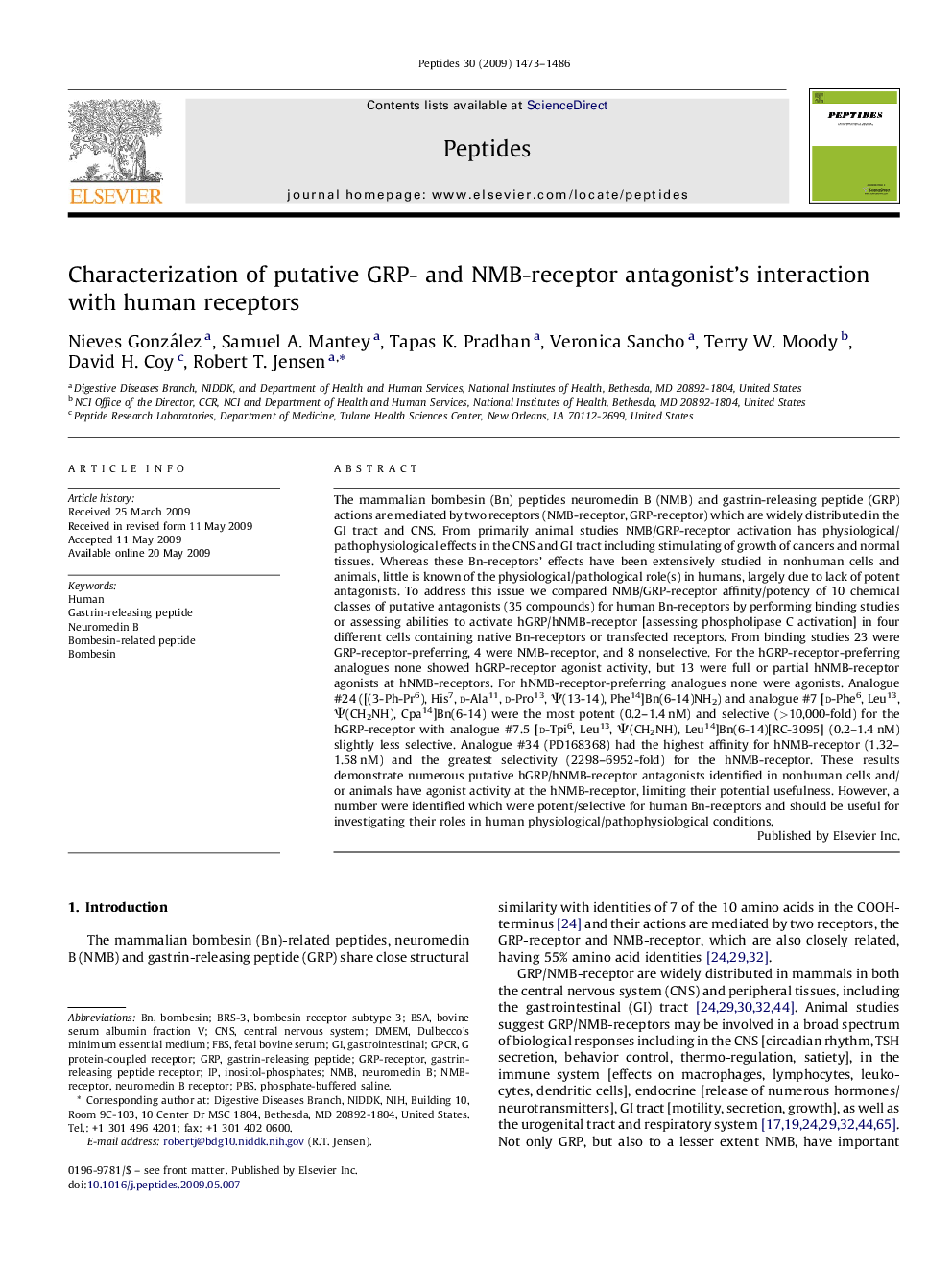| کد مقاله | کد نشریه | سال انتشار | مقاله انگلیسی | نسخه تمام متن |
|---|---|---|---|---|
| 2007251 | 1066368 | 2009 | 14 صفحه PDF | دانلود رایگان |

The mammalian bombesin (Bn) peptides neuromedin B (NMB) and gastrin-releasing peptide (GRP) actions are mediated by two receptors (NMB-receptor, GRP-receptor) which are widely distributed in the GI tract and CNS. From primarily animal studies NMB/GRP-receptor activation has physiological/pathophysiological effects in the CNS and GI tract including stimulating of growth of cancers and normal tissues. Whereas these Bn-receptors’ effects have been extensively studied in nonhuman cells and animals, little is known of the physiological/pathological role(s) in humans, largely due to lack of potent antagonists. To address this issue we compared NMB/GRP-receptor affinity/potency of 10 chemical classes of putative antagonists (35 compounds) for human Bn-receptors by performing binding studies or assessing abilities to activate hGRP/hNMB-receptor [assessing phospholipase C activation] in four different cells containing native Bn-receptors or transfected receptors. From binding studies 23 were GRP-receptor-preferring, 4 were NMB-receptor, and 8 nonselective. For the hGRP-receptor-preferring analogues none showed hGRP-receptor agonist activity, but 13 were full or partial hNMB-receptor agonists at hNMB-receptors. For hNMB-receptor-preferring analogues none were agonists. Analogue #24 ([(3-Ph-Pr6), His7, d-Ala11, d-Pro13, Ψ(13-14), Phe14]Bn(6-14)NH2) and analogue #7 [d-Phe6, Leu13, Ψ(CH2NH), Cpa14]Bn(6-14) were the most potent (0.2–1.4 nM) and selective (>10,000-fold) for the hGRP-receptor with analogue #7.5 [d-Tpi6, Leu13, Ψ(CH2NH), Leu14]Bn(6-14)[RC-3095] (0.2–1.4 nM) slightly less selective. Analogue #34 (PD168368) had the highest affinity for hNMB-receptor (1.32–1.58 nM) and the greatest selectivity (2298–6952-fold) for the hNMB-receptor. These results demonstrate numerous putative hGRP/hNMB-receptor antagonists identified in nonhuman cells and/or animals have agonist activity at the hNMB-receptor, limiting their potential usefulness. However, a number were identified which were potent/selective for human Bn-receptors and should be useful for investigating their roles in human physiological/pathophysiological conditions.
Journal: Peptides - Volume 30, Issue 8, August 2009, Pages 1473–1486